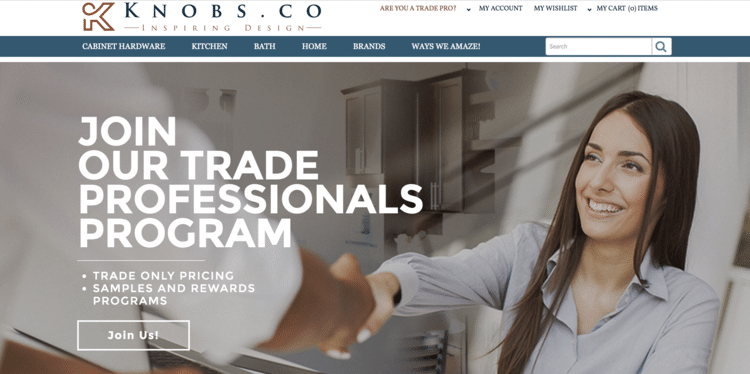Introduction
This article was contributed by one of our partners: BigCommerce, which is a powerful e-commerce platform for fast-growing and enterprise businesses.
As of 2024, the global e-commerce B2B industry is said to be worth over $7.7 trillion. That’s more than double the size of the direct-to-consumer market. Even more impressive, this figure is projected to grow by 18% annually until 2030!
But what’s worked for D2C companies online won’t necessarily work for B2B. Business and consumer sales differ greatly in terms of customer expectations, buying cycles and sales processes.
Here are a few key considerations to keep in mind when launching a B2B strategy, whether you’re branching out to a new customer base or taking your B2B company online for the first time.
Key differences between B2B and B2C strategy
Besides the obvious — B2B entails selling your products to other businesses, while D2C means directly selling to individual consumers — the two types of transactions have other factors that call for diverging strategies.
D2C expectations within wholesale
The shift from door-to-door B2B sales and manual spreadsheets to online wholesale stores and self-service ordering has driven a huge change in customer expectations. B2B buyers want an intuitive, seamless shopping journey similar to a typical D2C buying experience – but at scale.
With more millennials now in B2B-buying and decision-making roles, there’s an expectation that personalised, self-service options will prevail within wholesale, too. For merchants looking to boost the lifetime value and loyalty of their B2B customers, keeping up with these expectations is key.
The digitalisation of B2B means buyers now want familiar features like rapid repeat-ordering options, collection menus for items often bought together, and features tailored to their buying habits. Add in wholesale-specific features like custom checkout fields for invoicing, quantity-based pricing, and bulk shipping costs, and you’re golden.
With D2C-style functionality scaled up for wholesale buyers, solutions like SparkLayer are paving the way to success for over 1,500 B2B merchants (and their respective customers) across the globe.
Outreach
Whereas B2C purchases are usually made by one person, B2B sales usually require you to sell to teams of decision makers. These decision makers often come from different backgrounds, and therefore, have different needs and desires you must appeal to in order to win the deal. You must have collateral or content that speaks to each party’s needs, and helps them see why buying from you can make it easier for them to do their job or achieve their business goals.
Merchandising
Merchandising techniques vary based on B2C preferences; B2B customers are usually searching for specific features to serve as a comprehensive solution. The way you sell products, including messaging, up- and cross-selling techniques and product information you highlight, will need to be customized for each customer segment.
For example, B2C customers may care more about buying a product that is of the highest quality, since they are buying in lower quantities. B2B customers, on the other hand, may seek a product that works within their company’s tight budget and provides easy recurring order set up. Your product may very well win in all of these categories, but you need to understand your buyers’ goals in order to include the key information that speaks to them.
Discover five ways how you can strengthen your brand identity as a wholesaler.
Pricing
Regardless of what you’re selling, your business customers are going to need a larger amount of it than your individual consumer base. You’ll also likely need to lower your prices to compete with wholesalers and other B2B sellers, which is why many B2B companies don’t make their pricing publicly available.
This opens up the opportunity for price customization, basing B2B pricing off of individual customers and situations and maximizing your ROI on a case-by-case basis. There are options for implementing quote technology to streamline this portion of the sales process, or enabling customers to call in their orders the old-fashioned way.
Shipping
Individual shoppers may receive a few boxes at a time while businesses may require truckloads. B2B shipping requires a much different fulfillment strategy, from packaging, to how and how much you pay a carrier.
Despite this, even B2B customers expect your shipments to be speedy. About 78% of B2B customers (compared with a similar 83% of B2C consumers) say expedited fulfillment options are important or very important.
About 78% of B2B customers say expedited fulfillment options are important or very important.
Internal operations
Keep in mind that the move to online B2B sales should make day-to-day life easier for you, not more challenging. It will be important to leverage the tools at your disposal to automate and streamline as much of the sales and shipment process as possible.
Custom quote software can be embedded within B2B portals, allowing you to send personalized quotes for unique orders. The software should also allow customers to save and access this order for easy mass reordering, setting up recurring orders and filing purchases with their finance department. Such enterprise resource planning (ERP) tools can often be found within the leading e-commerce solutions’ marketplaces.
Of course, even with these efficiencies, you may need more sets of hands to handle the increase in sales across departments (at least, that’s the hope).
Tips for excelling at B2B sales
A good online store can not only help you reach new customers but serve your existing customers better, thanks to the unparalleled convenience of online shopping. There are a few best practices that should frame your strategy as you prepare to make the move.
1. Onboard your existing customers
B2B customers are ready and willing to adopt the B2C conveniences of buying online. According to The Future of Customer Engagement and Commerce, nearly half (49%) of B2B customers prefer to make work-related purchases through a website and 72% desire self-service access to an account to manage their own orders.
49% of B2B customers prefer to make work-related purchases through a website and 72% desire self-service access to an account to manage their own orders.
Online stores have more personalization capabilities than ever, thanks to live chat, omnichannel communication options and other near-instant direct connections with customers. However, because many B2B customers are still used to catalog browsing, you’ll need to continually educate them on how to utilize your online channels.
This can be achieved by providing a range of always-accessible collateral, like FAQs, guides and educational marketing campaigns on your website, in ads and in email. Expect a learning period in which your customer support team will need to answer questions and help customers understand and adopt the new process. Make sure to educate them on why ordering online is better for them, i.e. they can order on their own time and manage their account through a portal.

2. Educate your audience segments
We live in the age of information, and if you don’t provide it, your competitor will. Put yourself in the shoes of each of your audience segments to consider what information each would need to make an informed decision and purchase from your business.
Before consumers even get to the consideration step of the sales process, they need to be engaged. Creating content, like ebooks, infographics and blog posts, catches prospects’ attention, showcases your brand as an expert on your niche and builds trust. Sometimes it can even alert businesses that they may be having a problem they hadn’t considered.

3. Build an incentive program
Many B2B companies sell products that regularly need to be restocked. Setting up a program that allows B2B users to make accounts, set up both subscription-based and one-off purchases, and keep tabs on their orders can keep buyers engaged and loyal over time.
Such loyalty programs also bring in a wealth of new data that you can put to work for your sales and marketing teams, allowing you to better predict customer needs and see big-picture trends to guide your strategy.
Search your e-commerce platform’s marketplace for loyalty program apps and integrations to get ideas for incorporating incentive programs into your site. Integrations like Rebilla can help you manage saved credit card information for customers, while PayWhirl is great for recurring billing.
Discover more best practices for loyalty programs in this detailed article.
4. Don’t leave room for shipping and fulfillment errors
With large orders comes more room for inventory and shipping errors. And B2B shipping errors, which sometimes affect entire truckloads of stock, can be quite costly for e-commerce businesses.
Thankfully, integrating with Brightpearl can help you reduce order and fulfillment errors, while adding tools like ShipStation can make shipping streamlined and simple. The key is to automate as much of this process as possible to avoid human error and administrative workload.
Conclusion
Whether you’re launching a B2B business or thinking of expanding to the web, launching a successful B2B e-commerce store will come with a learning curve. But if you take the time to make the online experience educational and easy for customers to use, while making the back-end streamlined and automated, you’ll find yourself with happier customers, more repeat business and an influx of new opportunities before long.
Further Reading
13 Gorgeous B2B E-Commerce Store Designs
5 Ways You Can Strengthen Your Brand Identity as a Wholesaler
10 Inspiring Retail & Wholesale Success Stories You Must Read
